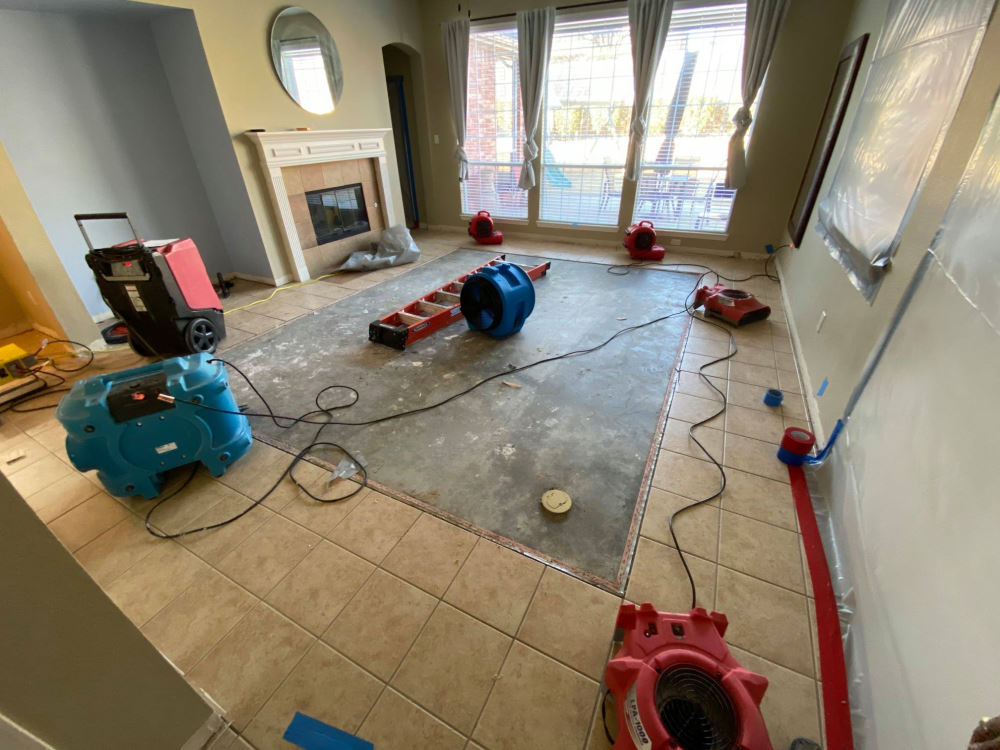Quick and Effective Water Damages Elimination Solutions for Any Kind Of Residential Or Commercial Property
In the face of water damages, swift and reliable options are extremely important to protect the honesty of any residential or commercial property. By utilizing a meticulous approach that encompasses analysis, removal, removal, and restoration, one can navigate the intricacies of water damages elimination with skill. The journey in the direction of thorough water damage solutions begins with comprehending the elaborate actions entailed in guarding any property from possible devastation.
Analyzing the Degree of Damage
Upon coming across a water-damaged location, the initial step in the repair process is to thoroughly analyze the extent of the damages to identify the required course of activity. This assessment is crucial as it lays the foundation for the entire restoration process. Specialists generally conduct a detailed inspection to review the impacted locations, identifying the source of the water breach and classifying the water damage based on market criteria.
During the assessment, professionals search for noticeable indicators of damages such as water discolorations, mold growth, and structural weaknesses. They additionally make use of specialized tools like moisture meters and thermal imaging electronic cameras to discover hidden dampness pockets within walls, ceilings, and floorings. By determining all areas affected by water damage, professionals can produce a comprehensive strategy outlining the actions required to restore the property to its pre-damaged condition.
Additionally, assessing the degree of the damage enables reconstruction teams to prioritize jobs, allocate resources efficiently, and supply precise price estimates to the residential or commercial property proprietor. This first assessment establishes the stage for an effective water damages restoration process, guaranteeing a detailed and reliable option tailored to the certain needs of each scenario.

Water Removal and Drying Strategies
After finishing a thorough analysis of the water damages and identifying all influenced locations, the next essential action in the repair process entails implementing water removal and drying methods. Water extraction is vital to eliminate standing water quickly and effectively from the property. This procedure commonly involves utilizing effective pumps and vacuum cleaners to draw out huge amounts of water. Once the mass of the water has been gotten rid of, the drying procedure starts. Drying out methods such as dehumidification and air blood circulation are utilized to remove excess dampness from the air and surface areas. Dehumidifiers are particularly beneficial in decreasing moisture levels, preventing mold and mildew growth, and speeding up the drying out procedure.
In addition, customized equipment like air movers and heating units may be used to improve the evaporation of water from rugs, wall surfaces, and furniture. It's important to check the drying out progression continually to make certain that all moisture is effectively removed, preventing additional damage such as mold and mildew and architectural concerns. Appropriate water extraction and drying out strategies are crucial in restoring the building to its pre-damaged problem efficiently and successfully.
Mold And Mildew Prevention and Removal Techniques
Applying reliable mold prevention and remediation methods is important in guaranteeing the long-term health and architectural honesty of a residential or commercial property following water damage. Mold can start growing within 24-48 hours after water direct exposure, positioning serious wellness risks and triggering more damage to the residential property if left uncontrolled. To stop mold development, it is vital to immediately attend to any water leakages or flooding, extensively dry affected areas, and decrease humidity levels below 60%.

Structural Repair Services and Reconstruction
Provided the essential importance of resolving mold and mildew problems immediately to safeguard residential or commercial property stability and owner health, the focus now shifts to the important element of structural fixings and repair. When water damage has actually jeopardized the structural honesty of a residential or commercial property, speedy activity is important to avoid more wear and tear.
Specialist restoration companies employ specific equipment and techniques to efficiently resolve architectural problems created by water damages. These specialists possess the expertise to recognize concealed damages, develop a comprehensive repair plan, and perform repair services properly. Structural repair work are not just important for guaranteeing the safety and security and stability of the home but additionally for stopping long-term problems like mold and mildew growth and degeneration.
Executing Long-Term Prevention Measures
To ensure the the original source long-lasting defense of a residential or commercial property from water damages, aggressive measures must be carried out. One important action is regular upkeep of the building's plumbing and roof covering to prevent leaks and water infiltration. By applying these lasting prevention measures, home owners can dramatically lower the danger of water damage and protect their investment for years to come.
Verdict
Finally, it is important to quickly evaluate and address water damage in order to prevent more issues such as mold growth and structural damage. By making use of effective water extraction, drying out methods, mold avoidance techniques, and structural repair services, property owners can minimize the lasting results of water damages. Implementing proactive prevention a knockout post measures can help secure homes against future water damages occurrences.